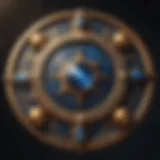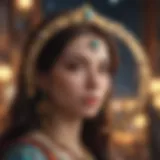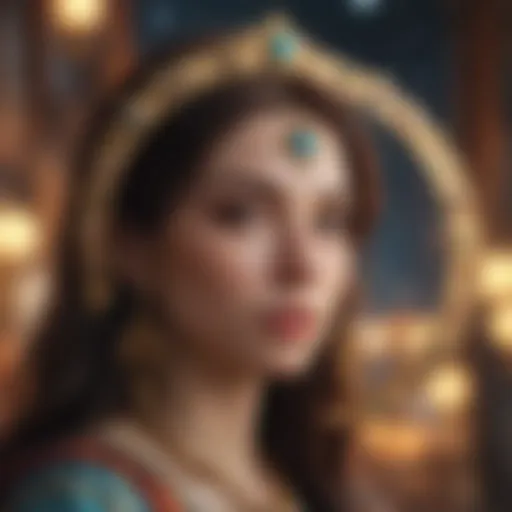Exploring Yes or No Tarot Readings: Trust and Insights
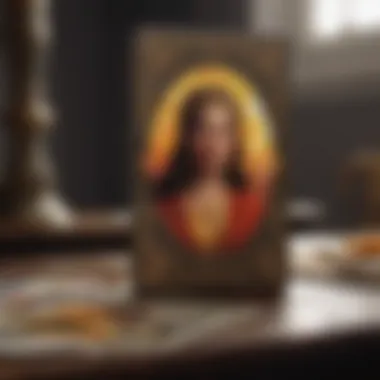
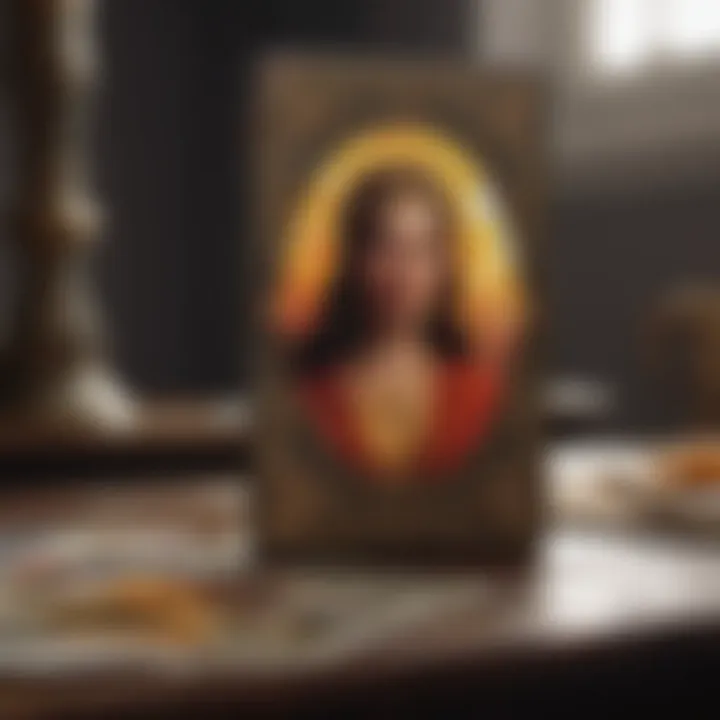
Intro
In the mystical realm of tarot, many seekers turn to cards when faced with pivotal decisions. They often seek straightforward answers to complex questions. This inclination leads to the intriguing practice of yes or no tarot readings, where clarity is the name of the game. Yet, understanding this form of divination requires more than just pulling cards. It involves a deeper grasp of the methodology and the spiritual nuances that govern tarot.
The relationship between the reader and the seeker is paramount. Trust plays a crucial role here; it’s a bridge that connects the interpretation of the cards and the inner thoughts of the consultant. When you ask a simple yes or no question, you might be surprised how these cards unveil intricate truths within the binary framework.
In this article, we’ll peel back the layers of yes or no tarot readings. We’ll discuss the diverse spreads tailored for decisive answers, how to interpret the implications of the cards, and the philosophical backdrop influencing our choices. Whether you’re a novice just dipping your toes into tarot or a seasoned reader refining your craft, this exploration sets the stage for you to effectively navigate the nuances of decision-making through the lens of tarot.
Understanding Tarot
To grasp the intricacies of tarot readings, one must first delve into the very essence of what tarot represents. This isn't merely about mystical insights or shuffling cards. It’s about connecting with a tool that reflects our inner workings and questions about life.
Through understanding the foundations of tarot, one learns to navigate the ever-changing landscape of human experiences and emotions. Tarot is often perceived as a roadmap, guiding individuals through decisions and dilemmas. Recognizing its fundamental principles allows practitioners to engage with tarot meaningfully, especially in the context of yes or no inquiries.
Historical Context
The history of tarot is as layered as the cards themselves. Initially developed as playing cards in the 15th century in Europe, they soon transformed into a medium for mystical exploration. Early decks did not carry the spiritual significance attributed to them today. However, in the 18th century, the trend shifted as cartomancy became widely recognized, and tarot's role as a divination tool was cemented.
Different cultures have influenced tarot's evolution over centuries. For instance, the Italian Tarocchi emerged into the tarot we know today, with unique interpretations that varied by region. By the late 19th and early 20th centuries, influential figures such as Arthur Edward Waite and Aleister Crowley further shaped contemporary tarot through their distinctive decks and philosophies.
By understanding this historical backdrop, tarot practitioners can appreciate not just the cards, but the rich tapestry of cultures and beliefs that inform their meanings. Each shuffle holds echoes of human thought, echoing through time.
The Structure of Tarot Decks
A standard tarot deck comprises 78 cards, divided into the Major Arcana and the Minor Arcana. Each segment serves its own purpose and reflects different aspects of life.
- Major Arcana: This set includes 22 cards, each representing significant life themes or lessons. Think of them as archetypes that illuminate profound experiences. Cards like The Fool or The Lovers convey ideas of new beginnings and relationships, emphasizing their substantial thematic weight.
- Minor Arcana: Alternatively, this section consists of 56 cards divided into four suits—Cups, Wands, Swords, and Pentacles. Each suit corresponds to various aspects of daily existence. For instance, Cups relate to emotions and relationships, while Swords often deal with intellect and conflict.
Understanding this structural design gives practitioners a clearer lens through which to interpret the cards, especially when faced with direct inquiries such as yes or no questions. This nuance enriches the reading, allowing for deeper insights beyond surface-level answers.
The tarot deck, both as a historical artifact and a functional tool, stands as a testament to humanity’s quest for understanding and meaning in the face of uncertainty.
The Concept of Yes/No in Tarot
In the world of tarot, the concept of yes or no serves as a powerful tool for those seeking clarity in their life choices. Unlike open-ended questions that may lead to more nuanced interpretations, yes or no inquiries require a decisiveness that can feel refreshingly straightforward. This binary methodology resonates with many who are grappling with decisions that feel overwhelming or complicated. By distilling questions into a simple format, tarot offers practitioners a way to navigate the foggy landscape of uncertainty.
From personal dilemmas to professional crossroads, the yes or no format encourages individuals to confront their desires candidly. It pulls the hidden truths to the surface and often can reveal underlying motivations or fears. An example could be someone seeking insight into whether they should re-enter a romantic relationship. Phrasing it as, "Should I start seeing my ex again?" instantly shapes the reading around a specific decision, leading to clear guidance from the cards.
The benefits of using yes or no inquiries in tarot are multifold, making them a staple in the practice. For one, they foster immediacy; clients often leave readings feeling a heightened sense of direction. Additionally, they eliminate ambiguity, which is particularly beneficial for those prone to overthinking. However, it’s also essential to understand certain considerations that come with this style of questioning.
Over-reliance on yes or no answers can lead to a simplistic view of life’s complexities. After all, human experiences rarely fit into rigid categories. Thus, it's paramount for practitioners to maintain a balance between binary responses and the expansive landscape that tarot can explore. For instance, clarity in response is significant, but what happens when the cards suggest a deeper issue at play? Recognizing when to probe further or seek context can turn a basic reading into an eye-opening experience.
Defining Yes/No Questions
When it comes to formulating yes or no questions in tarot, clarity is king. A well-crafted question can mean the difference between insightful responses and vague interpretations. To unlock the full potential of tarot readings, it's crucial to understand what characterizes effective yes or no questions. Generally, these questions should be precise, focused, and devoid of unnecessary complexity.
For instance, instead of asking, "Am I making the right choices in my life?" consider reframing it to something more direct like, "Should I take the job offer?" This sort of clarity provides a sense of direction in the reading and allows the cards to speak louder, guiding the querent toward actionable insights.
Mixing in a little context can also be beneficial. Questions that situate the 'yes or no' within a broader narrative can result in richer readings. For example, asking, "Will pursuing my art full-time lead to fulfillment and stability?" can warrant deeper interpretations rather than a mere affirmative or negative. This method retains the essence of the binary question while opening doors to a more nuanced exploration.
The Relevance of Binary Responses
Binary responses in tarot relay vital information succinctly, and their relevance cannot be overstated. In a world that often feels overwhelmingly complex, the simplicity of yes or no responses helps to distill choices into manageable pieces. When faced with a myriad of options, it’s human nature to desire something concrete, a definitive point to grab hold of.
Consider a scenario where a person grapples with whether to relocate for a job. By posing the question as a binary one, the tarot reading can provide immediate feedback: either it's a green light or a red flag. Such clarity can immediately alleviate some of the tension that surrounding significant life decisions, often leading to unexpected moments of tranquility.
Furthermore, these responses encourage responsibility and ownership. Each yes or no serves as a pivotal decision point, encouraging querents to reflect on their values and beliefs. It challenges them to act upon what they discover about themselves through the tarot.
Ultimately, while yes or no may seem straightforward, their implications are layered with potential and meaning.
"The beauty of tarot lies not just in the answers it provides, but in the introspection it encourages."
To wrap all this up, the mechanics of yes or no questions are indispensable in tarot practices. They promote self-examination and foster trust, both in oneself and in the practitioner. In the landscape of tarot, they stand as a sturdy bridge between uncertainty and clarity, encouraging a journey toward self-discovery and informed choices.
Principles of Trusted Tarot Readings
In the realm of tarot, the essence of building those fundamental principles cannot be overstated. Trust is the backbone of any tarot reading; it lays the groundwork for a fruitful interaction between the reader and the seeker. When engaging in a tarot session, both parties must feel comfortable enough to open up and explore the layers of questions that may arise. This assurance not only facilitates a smoother reading experience but also enhances the accuracy of the insights offered. Let’s break down the key elements of this principle and how they work together for effective tarot practice.
Building Trust with Your Reader
Creating a trustworthy environment is paramount. The connection between the reader and the seeker helps in capturing the nuances of the inquiry. It’s like coming together under a shared umbrella amidst a downpour—both need to feel secure and protected. To cultivate this trust, a reader must demonstrate empathy, actively listen, and be open about their methods. Transparency can go a long way. For instance, explaining how certain cards might resonate with particular queries helps in setting expectations right.
A few strategies to build that rapport include:
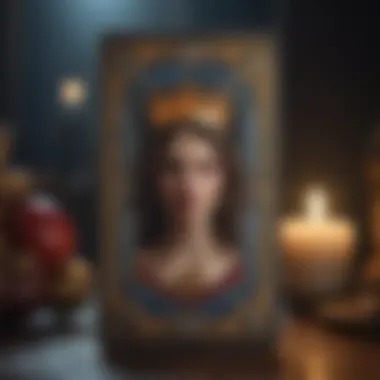
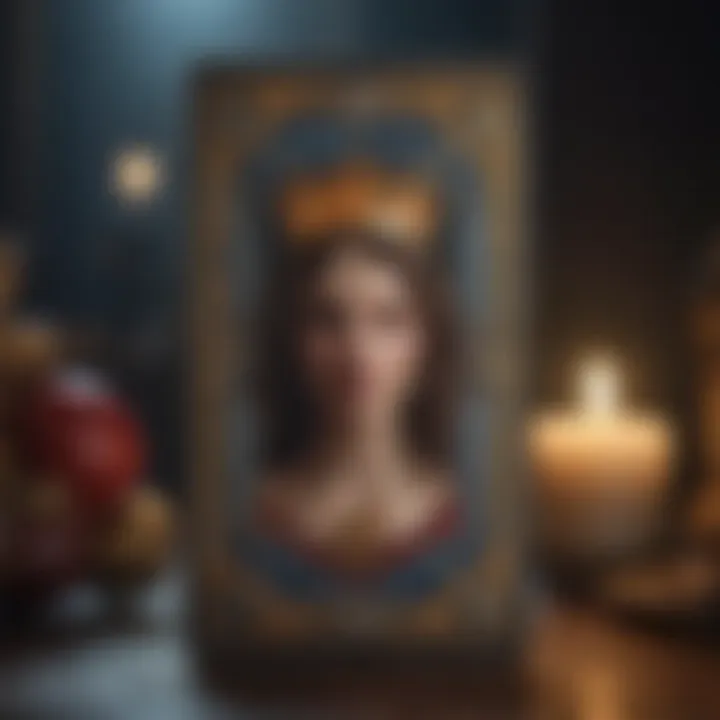
- Engage in an open dialogue: Start with pre-conversation to discuss the seeker’s intentions and expectations.
- Share your process: Whether it's your decision on which spread to use or how you interpret the cards, make it clear.
- Provide affirmations: Use affirming language that stimulates confidence in your readings like, "It's fantastic that you are taking this step!"
Ultimately, a trusting relationship allows for a freer exchange, enabling seekers to fully articulate their concerns, which in turn enriches the reading.
Ethics in Tarot Practice
When we talk about ethics in tarot, it goes beyond just the cards and spreads. It’s about understanding the moral responsibility that comes with having insight into someone else’s life. The ethical considerations in tarot practice serve as guiding stars, steering practitioners towards respectful and mindful readings.
Readers ought to follow a set of ethical guidelines, such as:
- Respect privacy: Never divulge a seeker's personal information, even in casual conversations.
- Avoid manipulation: Be wary of your influence over people’s lives. This is not about wielding power but facilitating understanding.
- Be honest: If you feel uncertain about a reading or the cards, it’s better to communicate this candidly rather than forcing interpretations.
"A reader’s integrity is as important as their skill in cards; they are intertwined in creating a respectful tarot environment."
Tarot can be a powerful tool, but with that power comes great accountability. Making moral choices not only enhances the reader's credibility but also elevates the spiritual atmosphere of the session, ensuring it remains a safe space for exploration.
By embedding trust and ethics deeply into the practice, tarot readings can flourish, impacting seekers’ lives in meaningful and constructive ways.
Common Tarot Spreads for Yes/No Queries
Common tarot spreads designed for yes/no questions are crucial tools within the tarot reading practice. They provide clarity when faced with uncertain situations. Each spread serves a unique purpose by simplifying complex inquiries into more manageable insights. This helps both the reader and the querent to navigate through the mind's fog.
The beauty of focusing on simple yes or no outcomes lies in the emphasis it places on direct responses. Such spreads not only help in deciphering the tarot cards but also encourage a more profound understanding of the circumstances surrounding the question. Utilizing well-defined spreads for yes/no inquiries can help avoid the misunderstandings that often muddy a reading.
One-Card Draw
The One-Card Draw is perhaps the simplest yet effective spread for addressing yes or no questions. With just a single card, this method reduces the noise and focuses on a specific inquiry. Imagine asking a burning question about a job opportunity. Drawing a card, say the Fool, might suggest a fresh start, hinting towards a yes if approached with an open heart. On the other hand, pulling the Ten of Swords might whisper that it's time to cut ties and walk away. This spread, while straightforward, captures the essence of the query succinctly.
Considerations with the One-Card Draw include:
- Clarity of the question is vital; ambiguous questions lead to vague answers.
- Be aware of your emotional state; it can influence the reading's effectiveness.
- Time constraints can limit the depth of interpretation.
Three-Card Spread
Moving up a notch, the Three-Card Spread offers a more nuanced perspective. This spread allows for a clearer narrative by presenting past, present, and future interpretations connected to the query. For a yes/no question, one might draw a card for the past influences, another for the current situation, and a third for the potential outcome.
For instance, asking whether to pursue a new relationship can yield results like the Two of Cups (indicating a harmonious potential), the Seven of Swords (caution about hidden agendas), and the Sun (symbolizing success). Here, the cards weave a storyline, making it clearer whether the answer skews towards yes or no.
Key points to remember when using the Three-Card Spread:
- It expands the narrative beyond a binary outcome.
- Contextual understanding, like past influences, provides richer insight.
- The balance of negative and positive cards can shift the overall interpretation.
The Decision-Making Spread
The Decision-Making Spread is particularly useful for weighing options. It generally comprises multiple cards dedicated to potential paths and their repercussions. This spread doesn’t solely answer yes or no but illuminates the choice’s possible impacts. In essence, it helps the querent see beyond a binary choice, introducing shades of gray into what may appear black and white.
For example, if a querent is torn between staying at their current job or exploring new avenues, this spread can highlight the positives and negatives of each option. Cards such as The Chariot and The Tower could emerge, urging action versus potential upheaval. This insight helps the querent make a more informed decision rooted in their unique context.
Benefits of the Decision-Making Spread include:
- Each card represents a different aspect of the decision, enriching the understanding.
- It encourages thoughtful reflection on each path’s implications.
- Great for complex situations where more than just a yes/no answer is needed.
"Trust in the tarot's innate ability to reflect your inner world. Each spread holds the key to unveiling the layers of your inquiry."
In practicing with these spreads, one not only hones their tarot skills but also gains valuable life insights, navigating the intertwining paths of existence. Choosing the right spread is key to obtaining the clarity one seeks.
Interpreting the Cards
Interpreting the cards in tarot is a vital aspect of using this divinatory tool effectively. It goes beyond simply looking at the imagery or memorizing card meanings. Instead, it embraces an intricate dance between intuition, knowledge, and context. When card interpretations are approached holistically, the reader can derive deeper, more nuanced insights that resonate with their specific questions or situations.
A significant component of interpreting the cards lies in understanding the interplay between the Major Arcana and the Minor Arcana. Each has its unique role yet equally contributes to the overarching narrative the cards tell.
Major Arcana and Their Significance
The Major Arcana comprises the first 22 cards in a tarot deck, each representing pivotal life themes and lessons. These cards delve into universal experiences, tapping into the collective unconscious. When a Major Arcana card appears in a reading, it often suggests significant events or profound transformations.
For instance, if the Fool pops up in response to a yes/no question, it signifies a leap of faith, an initiation into the unknown. It hints at embarking on a new journey, perhaps suggesting that the answer leans towards 'yes' in terms of taking a risk. Conversely, the Tower might signal upheaval or drastic change, indicating that the answer is likely 'no' if stability is the goal.
To deepen the interpretation, it's essential to consider the position of the card and the surrounding cards in the spread. This adds layers to the reading. An insightful practice is to create personal associations with each Major Arcana card, as these interpretations often evolve based on your experiences and reflections.
Minor Arcana in Pointing Directions
On the other side of the tarot spectrum lies the Minor Arcana, which captures the day-to-day aspects of life. These cards shine a light on the mundanity of existence and the small details that shape our decisions. The Minor Arcana is divided into four suits: Cups, Pentacles, Swords, and Wands. Each suit embodies different elemental energies, influencing their interpretations.
For example:
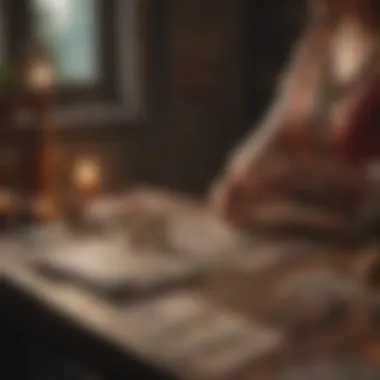
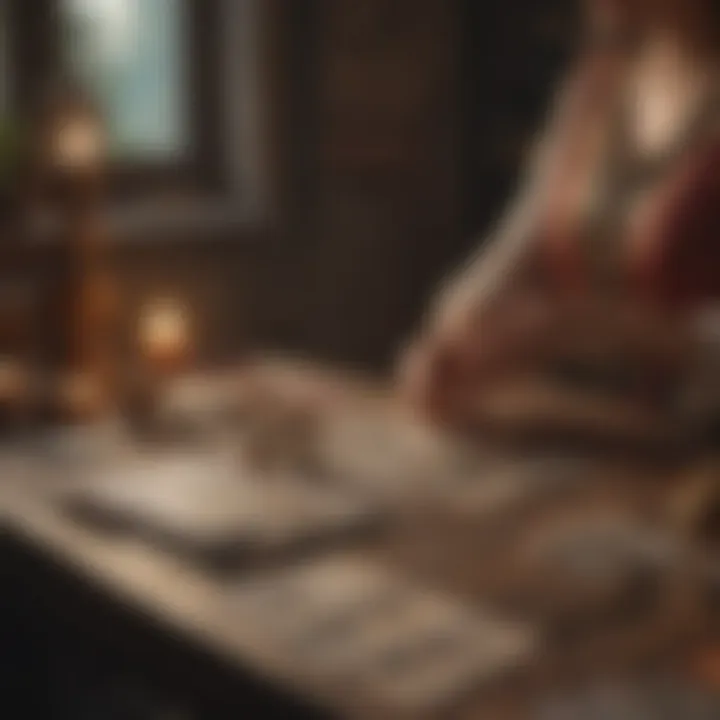
- Cups relate to emotions and relationships, guiding responses about personal matters or interpersonal dynamics.
- Pentacles focus on material aspects and careers, allowing one to consider financial decisions or professional paths.
- Wands emphasize action and creativity, frequently pointing towards the motivation behind choices.
- Swords represent thoughts and conflicts, often illuminating the mental processes that influence our questions.
In readings, the combination of these cards can be striking. For instance, drawing a Three of Swords alongside a King of Pentacles may indicate a need to confront emotional pain in professional relationships. Here, clarity arises not only from individual card meanings but also through the interactions between them. If this combination answers a yes/no question, it becomes crucial to parse the feelings that influence rationality.
Interpreting tarot cards is akin to piecing together a puzzle. Paying attention to both Major and Minor Arcana not only enriches the reading but elevates it from mere fortune-telling to a multifaceted exploration of one's life path. As you read the cards, aim to ask not just what they reveal, but how they connect the dots towards understanding the larger picture of your life questions.
Addressing Common Misconceptions
In the realm of tarot, misconceptions run rampant, often leading to a skewed understanding of what this divination practice truly entails. Addressing these common misconceptions is pivotal, especially for those seeking knowledge about the yes or no approach. Misunderstandings can shape one's experience, leaving them bereft of insight or even misled about the tarot's intentions.
First and foremost, a significant misconception revolves around the idea that tarot is merely a game of chance, akin to flipping a coin. Some believe that random draws yield definitive answers, while ignoring the layers of meaning each card carries. This perspective can diminish the potential for rich interpretation that lies within every session.
Moreover, many practitioners or enthusiasts hold onto the notion that tarot provides absolute answers. This belief can lead to frustration when the cards do not yield consistent results. Understanding that tarot is not about sheer certainty but rather about navigating possibilities is crucial for a fruitful tarot experience.
By tackling these misconceptions, readers can foster a more profound relationship with tarot, leading them to appreciate the cards as instruments of reflection rather than unequivocal predictors. This realization enhances the experience, allowing for deeper exploration of intuition and trust in the reading process.
Misunderstanding Randomness
At the heart of tarot lies a common but significant misunderstanding - the concept of randomness. Many individuals assume that the cards are drawn completely at random, much like shuffling a deck of playing cards. However, this perspective overlooks the intricate connection between intention and choice that accompanies every tarot reading.
When a question is posed, the energy of that inquiry influences the outcome. Each card is not merely selected by chance; rather, the process is steeped in layers of meaning that resonate with the query at hand. Recognizing this interplay can reshape how practitioners view their readings. For instance, a question about love may yield the Two of Cups, indicating a partnership or reconciliation. Seeing the card as a random occurrence misses the opportunity for deeper exploration of relational dynamics.
Moreover, tarot readings encompass the entirety of a client's life experiences, beliefs, and emotions. Thus, randomness isn't just about what card falls into place; it’s also about how those cards weave together to tell a story. A misapprehension of randomness limits the potential insights gained from each reading.
The Fallacy of Absolute Certainty
Another prevalent fallacy in tarot readings is the misconception that the cards will yield absolute certainty. A common scenario is when a querent, desperate for direction, insists that a simple "yes" or "no" answer should suffice. This expectation that tarot can provide a definitive conclusion misses the essence of what tarot offers.
Tarot is fundamentally about navigating possibilities, understanding consequences, and considering the different paths available. The cards highlight trends and patterns but do not dictate fixed outcomes. For example, drawing The Tower may not signal disaster in absolute terms; instead, it may point toward necessary upheaval leading to growth. For those expecting certainties, this ambiguity can be unsettling.
Embracing the inherent uncertainty in tarot opens the door to deeper reflection and exploration. This practice encourages seekers to engage actively with the narrative of their lives rather than passively accepting a proclamation. When one acknowledges the fluidity of outcomes, the reading transforms from a rigid framework into a dynamic journey of self-discovery.
Practical Tips for Effective Readings
When it comes to tarot, the experience can flow much smoother when one takes certain practical steps. These steps can turn a reading from a casual glance into a meaningful exploration. Emphasizing particular aspects, like environment and mental preparedness, creates a foundation for more accurate interpretations. Practical tips are particularly vital when addressing yes or no inquiries, where clarity and presence of mind are crucial.
Creating the Right Environment
The surroundings where a tarot reading takes place play a significant role in the outcome. It’s often said that energy is palpable, and in tarot reading, the environment acts as a conduit for intuitive insights. Therefore, arranging a suitable space can enhance the experience.
The Importance of Space: A quiet and comfortable area fosters relaxation. Consider dimming the lights and using candles or incense to create a soothing ambiance. The smell of sandalwood or lavender can elevate focus, while soothing music in the background might help calm nerves.
Removing Distractions: Turn off digital devices or at least silence them. This ensures that you're not interrupted mid-reading by phone calls or notifications. An open window can be refreshing, just make sure external noise does not interfere.
Personal Touches: Surround yourself with items that hold personal significance — be it crystals, images, or keepsakes. They can nurture the energy and intention of the session. A quiet altar, even a small one, can enrich the atmosphere, setting the stage for insightful revelations. Remember, what resonates with you creates a space that welcomes clarity.
Preparing Yourself Mentally
Mental preparation is akin to warming up before a race; it directs the mind and heart towards a focused outcome. Without addressing your own thoughts and feelings beforehand, getting to the heart of the tarot readings can be a challenge.
Clearing the Mind: Take a few moments to meditate or practice deep breathing before diving into readings. Picture the tension fading away with each exhale, leaving space for fresh mental energy. Clearing your thoughts, just like dusting off a shelf, opens the pathway for creativity and insight.
Setting Intentions: Ask yourself what you aim to achieve with the reading. Be explicit about your desires. This also helps when formulating yes or no questions. Are you seeking clarity? Looking for affirmation? A well-defined intention as simple as, "I ask for insight into my career decisions" can pave the way for more focused outcomes.
Emotional State: Acknowledge your emotional state before starting. Are you feeling grounded or restless? Accept these feelings rather than pushing them aside. In the realm of tarot, self-awareness leads to more genuine interpretations.
"The clearer your intention, the clearer the guidance you will receive."
By paying attention to your mental and environmental setup, you create an optimal atmosphere for engaging with tarot. Each reading becomes less about mere interpretation and more about a conversation with the universe, aligning your energies for meaningful insights.
The Role of Intuition in Tarot
Intuition plays a pivotal role in the world of tarot, especially when it comes to interpreting yes or no questions. It is not merely about the cards picked; it’s about the insights gleaned from them. The connections we create and the silent messages echoing through our gut feelings often provide clarity that logic can’t quite grasp. This section will explore how intuition interweaves with tarot reading to enhance understanding and decision-making.
Trusting Your Instincts
Trusting your instincts is crucial for anyone engaged in tarot, regardless of whether you’re an experienced reader or a beginner. Each reading holds a unique energetic signature, and the ability to resonate with these energies relies heavily on your intuition. When asking a yes or no question, you might pull a card like the Two of Swords. This card, on the surface, might appear neutral. But, if you listen closely, your instincts might hint at a different story, pointing you toward conflict or indecision.
Every reader has had moments when they felt a peculiar nudge while interpreting cards, almost as if there was a voice guiding them. This gut feeling often leads to more nuanced insights, those little revelations that can make the difference between a straightforward yes or no and a deeper understanding of a situation.
Some tips for honing this essential skill include:
- Practice Regularly: The more you read, the better you’ll get at tuning into your instincts.
- Keep a Tarot Journal: Document your readings and how your intuition guided you. Over time, you’ll see patterns and learn to trust your inner voice.
- Meditation: Take moments to clear your mind. The quieter you become, the louder your intuition can speak.
"Intuition is seeing with the soul." – V. B. Montgomery
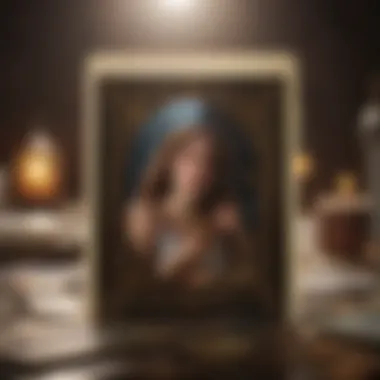
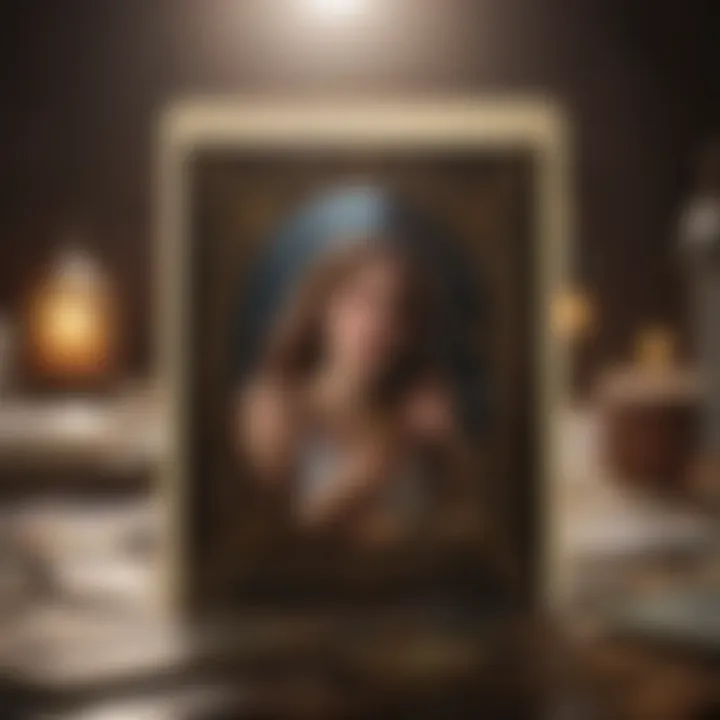
Tuning into Symbolism
Understanding symbolism is a language unto itself in tarot. Each card is a rich tapestry of symbols that carry multiple meanings. Learning to tune into this symbolism is another facet of following one’s intuition. It’s less about memorizing what each card signifies and more about feeling what they represent in the context of your reading.
For instance, when the Death card appears, it often sets off alarms for the uninitiated, but the symbols within may suggest transformation rather than demise. If your gut directs you to see this card as an opportunity for rebirth or change, then that’s the insight you should lean into.
Consider the following:
- Context Matters: Different scenarios may alter the interpretation of the same symbol.
- Personal Associations: Dig into your personal feelings about certain symbols; these can often reveal layers of meaning unique to your reading.
- Interact with the Cards: Lay them out, feel their energy, and let the symbols speak to you.
Combining intuition with an understanding of symbolism elevates your tarot readings, encapsulating a dialogue between the cards and your inner self. This relational dynamic enriches the yes or no responses, making them avenues for growth and self-discovery, rather than merely transactional assessments.
Case Studies: Yes/No Tarot in Practice
When it comes to tarot readings, diving into case studies provides a treasure trove of insights. These real-world examples illustrate how yes/no tarot readings manifest in actual situations, highlighting their impact and the nuances often overlooked. This section illuminates the practical application of tarot in decision-making, showcasing both the triumphs and trials faced by practitioners and their clients.
Successful Outcomes
In the realm of tarot, the potential for positive outcomes is substantial. Consider a client who grapples with whether to accept a new job offer. Through a one-card draw focused on this yes/no query, the card drawn was the Sun. Known for its symbolism of success and positivity, this card sent a clear message. The outcome? The client embraced the new opportunity, leading to professional growth and personal happiness.
"Success in tarot isn't just about the cards drawn; it's about the trust in the process and the clarity you provide."
Another illustration can be found in love-related queries. A client asked, "Should I rekindle my relationship with my ex?" The reader employed a three-card spread, interpreting the cards as progression, emotional maturity, and openness to new experiences. The answer was a confident yes. The client proceeded with the rekindling, resulting in a renewed partnership that flourished beyond expectations.
Through these examples, we see tangible benefits emerging from yes/no tarot readings. When clients feel empowered to make decisions based on sound interpretations, the trust in their reader grows stronger. Importantly, these successes do not solely hinge on the cards but rather on the connection between the reader's insights and the client's life circumstances.
Challenges Encountered
However, the journey with yes/no tarot is not always smooth sailing. It brings to light challenges that many practitioners face. There are instances when a card drawn leaves both the reader and the client uneasy, leading to miscommunication or misinterpretation. A client once posed the question, "Will I get the promotion?" When the drawn card was the Tower, it indicated upheaval or unexpected changes. The reader hesitated but ultimately conveyed the message. The client, apprehensive about the rejection, defaulted to a fearful mindset, ultimately opting not to pursue the promotion.
Additionally, the nature of yes/no inquiries themselves can lead to conflicting feelings. A reader may find that continued emphasis on binary results oversimplifies complex emotions. For example, when a querent asks, "Should I divorce?" the cards may suggest a yes or no, but there lies a web of emotions and circumstances that the simple answer cannot encapsulate.
Ultimately, the responsibility rests on the reader to ensure that their communication is clear and compassionate. It’s key to remember that a card's message could be nuanced; hence, touching upon the bigger picture in visionary ways can be beneficial. Addressing how readability stretches beyond a binary answer allows room for deeper dialogue between the reader and the querent, often leading to more enriching results.
Beyond Simple Answers: The Bigger Picture
In the sphere of tarot, especially with the popular inclination towards yes/no queries, it is effortless to overlook the grand tapestry that weaves these readings into the fabric of our lives. One might ask a simple question and expect a clear answer, but tarot operates on multiple layers. It is not just about answering the immediate query; it digs deeper into the context of one’s life choices, values, and the very essence that shapes decisions.
The significance of viewing the bigger picture cannot be understated. Tarot taps into the energies and insights that often elude our conscious minds, shedding light on paths that are often murky. When we pose a yes or no question, we must recognize that the response is more than a binary answer; it is a reflection of our internal landscape and the myriad influences in play.
Integrating Tarot with Life Choices
When utilizing tarot to make decisions, integrating its insights with our broader life choices often leads to more profound outcomes. It’s not merely about asking, "Should I take this job?" Instead, it’s essential to recognize the underlying motives that prompt such inquiries. Engaging with the cards can facilitate introspection, nudging us to address fears, dreams, and values that govern our choices.
- Personal Reflection: Tarot serves as a mirror, reflecting back our deepest concerns and desires. Upon drawing cards, take time to consider how they resonate with your current life situation.
- Contextual Awareness: Understanding that every yes or no can be influenced by surrounding circumstances provides clarity. For example, a yes might suggest moving forward, but it could also illuminate aspects of timing or readiness that require attention.
- Holistic View: Considering the influence of relationships, emotions, and goals can shape our understanding of the tarot reading. How a card’s meaning reverberates in different areas of life is essential.
In essence, integrating the insights from tarot into our life choices involves an ongoing dialogue between the self and the cards. This interaction is not just about conclusions but fostering awareness of what it means to navigate life’s complexities.
Understanding the Complexity of Human Decisions
It is essential to acknowledge that human decisions are rarely straightforward; they are often layered with complexities that cannot be adequately addressed by a mere yes or no response. Numerous factors, including emotions, past experiences, and societal pressures, shape our decisions. Thus, exploring these nuances through tarot can be enlightening.
Consider the following points:
- Emotional Layers: Decisions are woven with emotions. A yes could indicate eagerness or enthusiasm, while a no may stem from fear or uncertainty. Tarot can help bring these emotions to the fore, urging individuals to confront underlying feelings.
- Cognitive Dissonance: When there is a conflict between what one desires and what is rational, tarot can serve as a wisdom tool. It guides one toward making decisions aligned with their authentic self rather than conforming to external expectations.
"Tarot acts like a compass, guiding individuals not merely through choices but toward deeper understanding of who they are and what paths they should tread."
This complex interplay of emotional awareness and cognitive exploration aligns neatly with the practical use of tarot. As one grapples with the intricacies of their choices, the cards become more than tools; they emerge as trusted allies in the quest for clarity amidst life’s chaotic decisions.
In summary, articulating the significance of the bigger picture in tarot goes beyond arriving at simple answers. It connects the intuitive language of the tarot with the intricate pathways of human decision-making, leading to a richer understanding of oneself and the roads one chooses to travel.
The End: The Value of Trust in Tarot
In the realm of tarot readings, trust serves as the bedrock for successful consultation. It is not merely a matter of believing in the cards; rather, it encompasses trust in yourself, the reader, and the process itself. When embarking on a journey through the tarot, understanding the importance of trust can enrich your experience, enable clarity, and enhance outcomes.
Reflecting on the Journey
The path of tarot exploration is often enlightening, revealing inner truths and clearer perspectives on decisions we face. Considering the past, one might recognize how different readings have shaped their choices. Engaging in tarot requires one to reflect on both victories and missteps. Each card drawn offers a weaving of past insights, present reflections, and future possibilities. The evolution of one’s understanding, aided by tarot, reflects our growing trust in the process. It can be tempting to dismiss readings after unfavorable outcomes. However, recognizing that tarot often guides us through introspection rather than mere answers helps in embracing it as a tool for personal growth.
"To trust in tarot is to engage with an ancient practice that encourages self-awareness. Understanding that each reading may not yield a clear answer propels us toward essential insights."
Trusting the reading means acknowledging the cards can resonate differently at various stages of life. When a question arises, revisiting past readings may shed light on a current situation. Have you grown since your last draw? Trusting the consistency of the tarot often unveils nuances missed before.
Embracing Uncertainty
Uncertainty permeates all aspects of life, and tarot aligns with this truth. Rather than fearing the unknown, embracing it opens a world of possibilities. Each reading extends beyond a straightforward yes or no; it encourages an exploration of the myriad outcomes we could encounter. This embrace of unpredictability fosters resilience, urging individuals not to fixate solely on a particular answer.
The tarot reminds us that not everything in life is black and white. The willingness to step into the murky waters of uncertainty can be liberating. Instead of restricting oneself to binary choices, one can navigate pathways of decisions that lead to unexpected but rewarding endings. Focusing on trusting the process eliminates the anxiety that may accompany decision-making, allowing for a more graceful acceptance of whatever may arise.
To sum up, approaching tarot with trust not only promotes deeper understanding but also enhances decision-making capability amidst uncertainty. By reflecting on personal journeys and welcoming the unknown, we unlock a richer tapestry of our experiences with the cards. The value of trust in tarot doesn’t just linger in the past; it builds a foundation for future decisions, showing how intertwined our lives are with the insights we glean from this profound practice.
